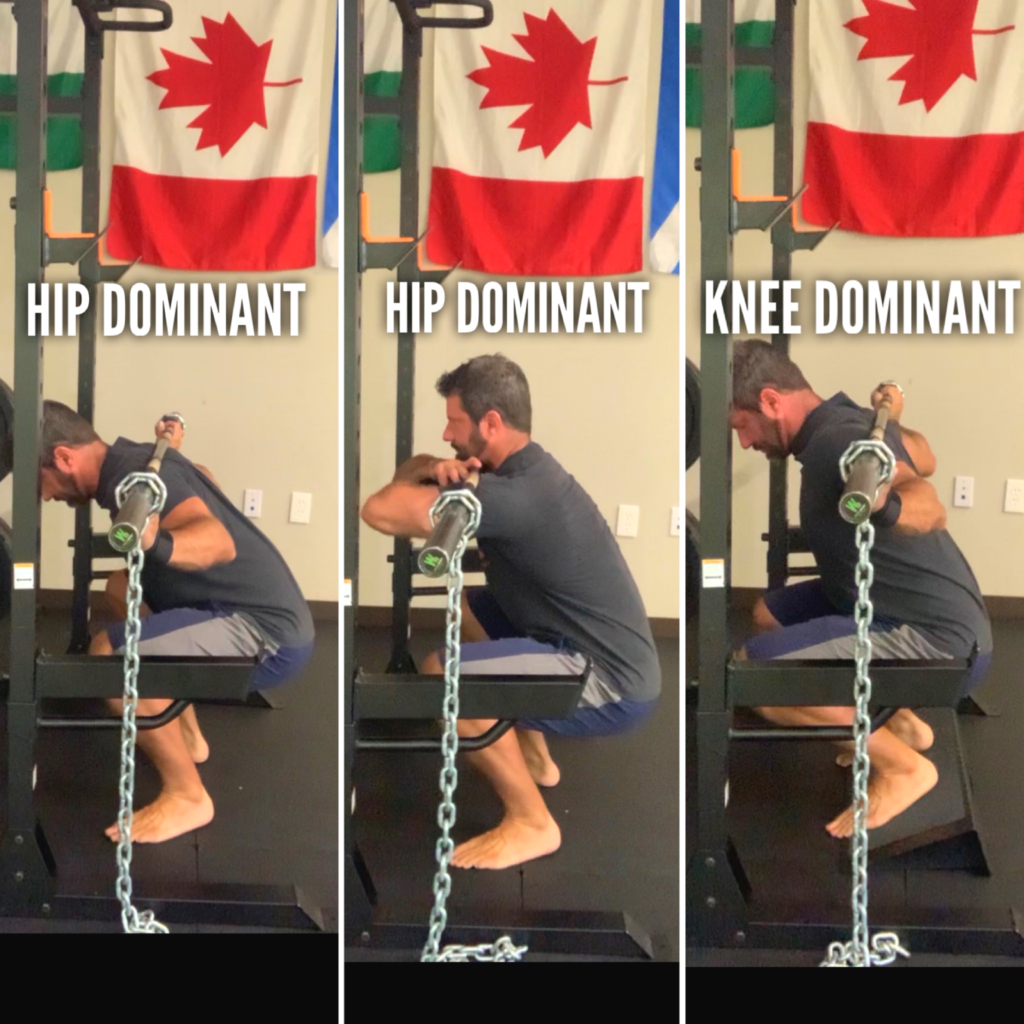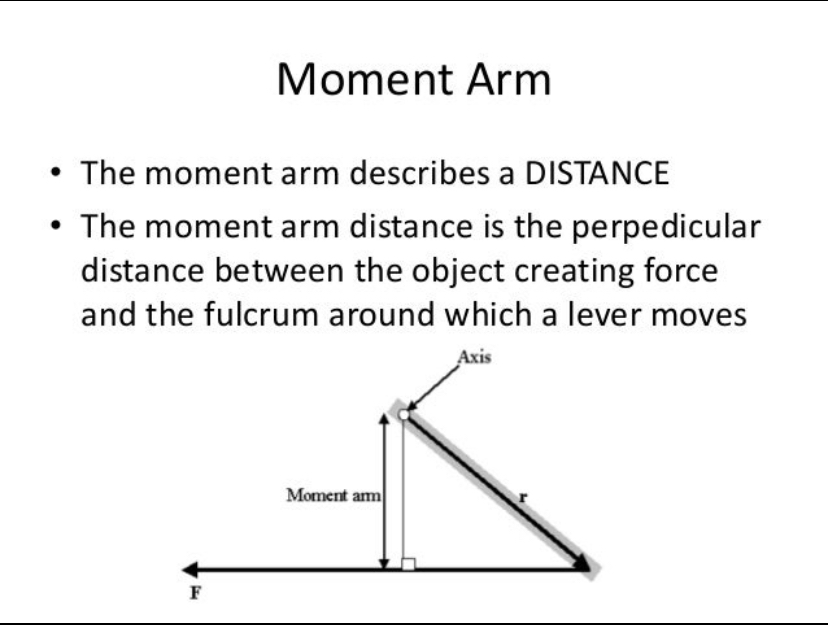by Dr. Marv
This may piss some people off, but a huge myth is that a front squat is just automatically “more quads” than a back squat……sorry, but not true FOR EVERYONE (please read what I said carefully).
While it’s true that you typically have a more upright torso with a front squat than a back squat, the front squat is still a hip dominant movement for a lot of folks.
How can I say that?
Here’s a picture breakdown of yours truly:

Let’s breakdown what the image is telling us and what I mean by hip or knee dominant. When it comes to determining which joint is being emphasized it’s all about moment arms.

In the picture above I am using a chain to show where the center of load is relative to my thigh. The distance from the chain to either my knees or my hips is the moment arm for that joint. The longer the moment arm (some folks use the term lever), the more emphasis there is on that joint to overcome the load. That means whatever joint has the longer moment arm is the joint responsible for the majority of the movement. And whatever muscles perform the movement of that joint are the primary movers in that exercise.
Basically, if you want a quad dominant squat then you want a knee dominant squat, full stop.
- NOTE: Regardless of moment arms, let’s not forget that in a deep squat regardless of the variation, your adductors are getting recruited first, before your glutes. Adding to that is most folks can get deeper into a front squat than a back squat (due to less torso lean) which again, further recruits adductors to get out of the hole.
Now let’s apply this information to my image above.
You can see a very long moment arm in both the back squat and front squat from the chain to my hips with a tiny one to my knees; with the major differences simply being more forward lean of my torso in a back squat and slightly more knee flexion in the front squat. It’s not until I elevate my heels in a back squat and drive my knees forward that you see any separation of the chain from my knee. When that happens THEN the squat becomes a knee dominant squat for me which means quads are responsible for the majority of the movement. And yes, you can do a heels elevated front squat as well for similar effect.
A lot of folks (probably the majority actually) like myself just lack the mobility to perform a deep front squat with the moment arm distribution emphasizing the knee joint over the hips. And for these folks, a front squat is NOT a quad-dominant squat.
While I do the old school bodybuilder crossed arm positioning to hold the bar due to my wrist injuries, a lot of folks use a traditional racked position. If they don’t have enough the wrist mobility to keep their elbows up high (encouraging proper thoracic spine (upper back) extension which we discuss below), as the set progresses their torso dips forward lengthening the moment arm to ensure it’s a hip dominant squat. Doing so also makes it very hard to stabilize and prevent the bar from rolling off their shoulders ending the set prematurely.
Honestly, my biggest gripe with front squats is they are just damn hard to perform with the bar at your neck. I think, “Why would I do a hip dominant squat similar to a back squat, but make it harder to stabilize and damn near impossible to not choke myself to death?”
It just doesn’t make sense to me (but admittedly I am hypertrophy – muscle building – driven in my personal training so stability = output = effective reps = hypertrophy).
However, front squats still make sense in certain situations.
There is less extension required of the thoracic spine in a front squat compared to a back squat. That fact is a damn good reason to pick a front squat over a back squat if someone can’t access the required T-spine extension for a back squat – that, I am not ignoring.
BUT! T-spine extension is still a huge requirement for a front squat and as you can see above, I’m not a poster child for mobility there which contributes to both squats being a hip dominant movement for me.
Often times when correcting somebody with a Good Morning-esque back squat (i.e. basically folding their upper torso forward instead of squatting down) I will use a front squat variation. First, I will use a goblet squat and then a zombie front barbell squat to cue proper torso position (often times I’ve found it’s a combo weak quads and poor mobility of the ankles primarily causing that pattern of turning a squat into a hinge).
Another time a front squat makes sense is for athletes since usually they have to resist a load in front of them rather than behind them (however I would argue a split squat will have much more carryover to the field than a front squat).
Additionally, front squats are going to have to be part of Crossfit and Olympic Lift training, assuming you have the mobility to perform this and the movements it carries over to.
Those situations make sense for a front squat – that I am not arguing so long as you have the required mobility to do so.
But what I don’t like is someone saying they do front squats because it’s “more quads bro” than a back squat without first assessing their own movement ability. If you’re like me, all you’re doing is picking a hip-dominant squat variation that’s a hell of a lot harder to stabilize and breath – and to that I just don’t see the logic.
Stay tuned for part two of this mythbusting blog series where I show you how to assess your own mobility related to front squats and then what exercises you can do so a front squat can be quad dominant for you.






